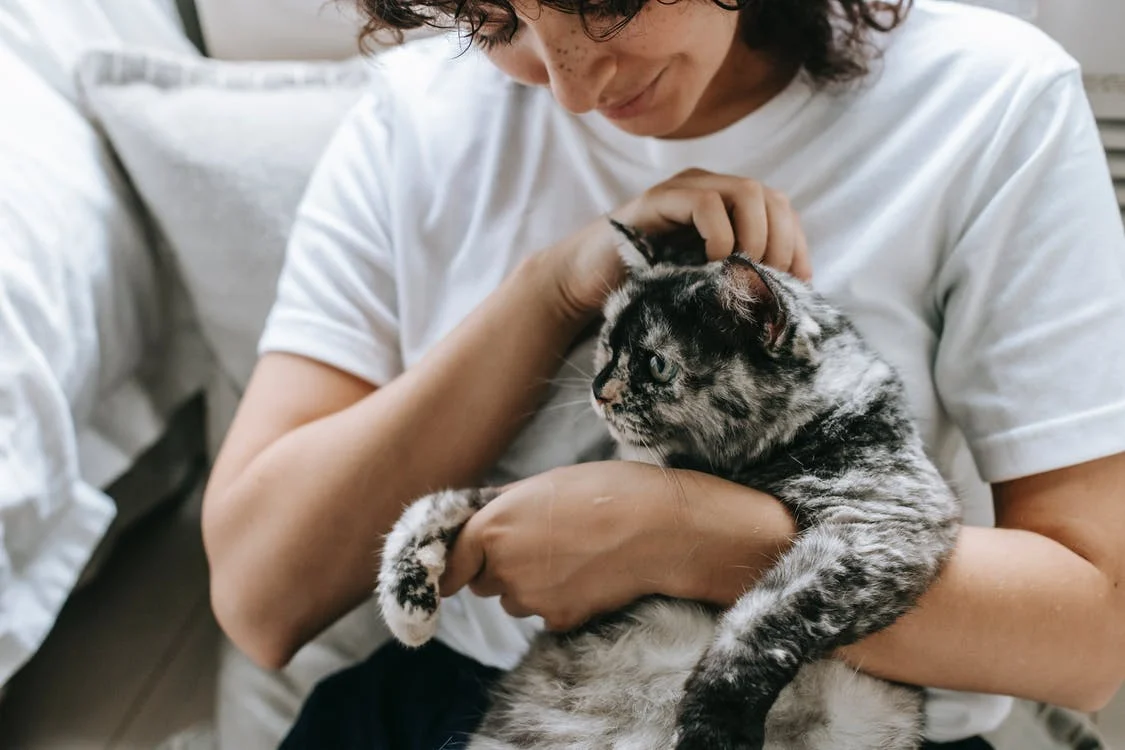According to research, petting a cat has real health benefits. People who own cats have a 30% better chance of avoiding stroke and other heart problems than those who do not. A feline companion can provide you with unconditional love and companionship thereby reducing stress and heart health issues. Owning a cat can be a very rewarding and relaxing experience.
According to one study, cats prefer smaller spaces and will seek out hideaways and corners to retreat to when they require privacy. Although cats require less space, they can happily live in one room if they have everything they require. Here are some tips for keeping your cat comfortable even in a small apartment:
1. “CATify” your apartment
The term “certifying” refers to the process of transforming your living space to mimic what your pet might encounter in the wild. Even in a small apartment, you can keep a contented cat. All you must do is use the available space creatively to create a mentally and physically stimulating environment for the furry menace. Cats aren’t concerned with floor space. They are far more concerned with cubic or vertical space, like why cats love boxes a lot, it is because they love the warmth of small spaces. And, in small apartments, we “go vertical,” taking advantage of what the walls have to offer us and our cats. Consider “catifying” your small apartment as creating an indoor-outdoor experience for your furry friend. Cats are inquisitive creatures. They must investigate, climb, hide, play, hunt, and nap. They can do all of this in a studio apartment if it is properly prepared for the cat invasion.
2. Position your cat’s litter box properly
There are numerous factors to consider when it comes to feline litter. Your main concerns may be odor and mess in your apartment, but this is highly dependent on where you place the litter box. The balcony or bathroom are usually the best places.
If you have feline-proofing installed, your balcony is ideal because it is well aerated, and the smell will not linger. A bathroom, on the other hand, is usually ideal for pets kept inside at night or when you are away from home, though this room may frequently lack ventilation. You will need to work together to find the ideal odor-resistant litter box.
Placement is critical in making your cat feel safe. Litter trays should be placed in discreet corners or adjacent to walls so that your cat has a full 180° view of any approaching danger while being protected from behind. Place the litter box away from your cat’s food and water. Provide a litter box on each floor of your home so that cats do not have to use the stairs to access one.
3. Provide scratching objects for your cat
Cats scratch their surroundings for a variety of reasons, including the removal of the dead outer layer of their claws. They have scent glands on their paws to mark their territory by leaving both a visual and a scent mark. To flex their claws and feet and stretch their bodies. Scratching is beneficial to your cat’s health; most cats will scratch on furniture even if they have a scratching post. To prevent this behavior, make sure your cat has a scratching post in every room. It doesn’t have to be a blog post. You can buy scratchers that hang on doorknobs or make simple wall scratchers that your cat will love. Scratching is a natural, instinctive behavior in cats. They have a strong desire to scratch to express emotions such as excitement or stress.
4. Clean the litter box daily
Most pet owners, especially those who live in apartments, may become lax with their home maintenance, particularly when it comes to litter boxes. However, if you own a cat and live in a small apartment, you must clean your litter box at least once per day. This is both sanitary and prevents the odor from spreading throughout your already cramped quarters. Sanitation is one of the top things to consider before getting a cat. A clean litter box is also good for your cat’s happiness. When their litter box is dirty, your cat is more likely to be destructive or aloof because they don’t feel safe going there. Your cat, on the other hand, is less likely to have an accident if they know that its litter box is a clean place to go.
5. Install cat tree/s
Cats adore cat trees because they are a lot of fun to climb. It’s a great form of exercise for both kittens and adults to use their bodies to balance and reach high places. Cats are natural climbers, so having a proper cat tree in a feline-occupied living space is essential. To keep your cat happy, make sure the cat tree has at least one tall scratching post. This will also provide an alternative for your cat to scratching furniture. A cat tree with a condo also gives your pet a safe place to hide and relax. Place the cat tree near a window for extra points so your cat can enjoy the outdoors from a safe distance.
6. Make collapsible cat tunnels
Tunnels allow cats to engage in behaviors that they would naturally exhibit in the wild, such as hiding, crawling, and hunting. Most cat tunnels on the market today are collapsible and easy to store, which is ideal for small apartments. You can make the tunnel an entirely interactive experience for your cat by hiding treats inside or dangling a fishing pole toy or a wobbler at the end.
7. Make a cat bed
It makes sense to get your cat a nice bed. Sleep is one of the most important aspects of a cat’s life, based on the amount of time they spend sleeping. Cats sleep for roughly two-thirds of their lives on average. Both dogs and cats require beds that provide adequate support for their bones and muscles, allowing for adequate sleep and rest without stiffness or achiness. It is even more important for your pets to receive proper care as they age.
8. Make your apartment cat-proof
Some cats are so smart that they can learn to open doors and windows. If you live in an apartment with a cat, you should reinforce your window screens. If your cat sees something interesting outside while the window is open, it is less likely to jump through the curtain. If your cat has figured out how to open the windows, you could install a physical closing mechanism. Furthermore, if your cat has learned how to open doors, invest in child-proofing knobs for your door so that your feline doesn’t sneak out in the middle of the night for a snack. Your cat will have a difficult time getting through without protruding presses even toddlers cannot pass through this space.
9. Provide an exercise cat wheel
A cat wheel can help cats burn extra calories. Cats benefit from activity and play. Playing helps an indoor cat’s body tone and mind stay active. Cats can become obese without enrichment and exercise if they are not walked on a leash or allowed outside. All cats require physical activity. However, some cat breeds are more athletic than others and want to do more than just zooming around your small-space apartment on occasion.
Get a cat exercise wheel to keep your cats healthy and provide them with the necessary physical stimulation indoors. Fortunately, these feline contraptions are narrow and won’t take up much space, even in a small apartment.

